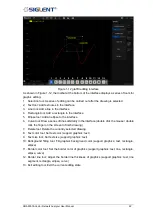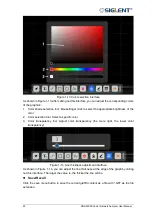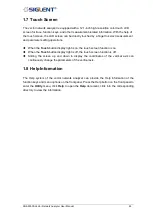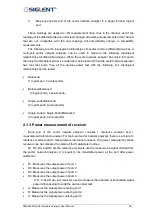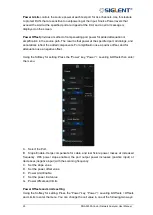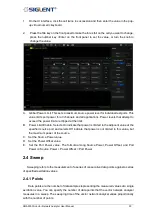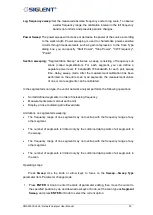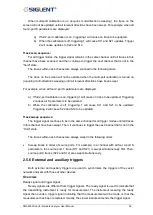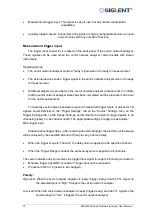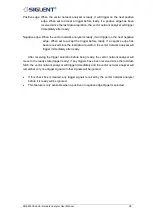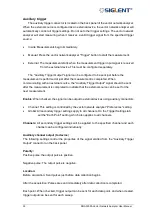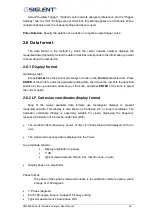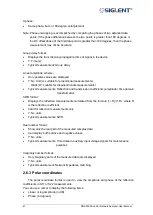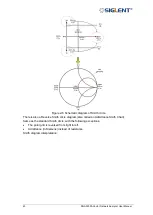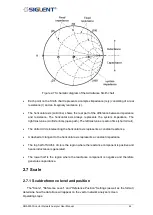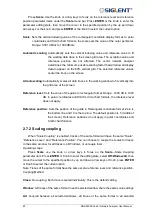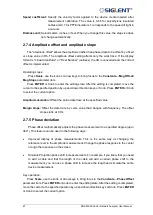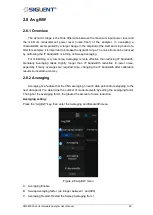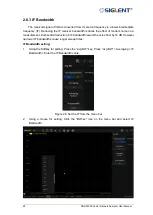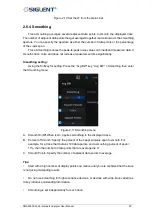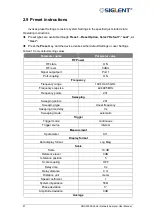
SNA5000A Vector Network Analyzer User Manual 36
When multi-port calibration is on (requires multi-direction sweeping), the trace on the
screen will not be updated until all relevant directions have been swept. For example, when all
four 2-port S parameters are displayed:
a)
If full 2-port calibration is on, triggering 1 will cause no trace to be updated.
b)
When the calibration is off, triggering 1 will cause S11 and S21 updates. Trigger
2 will cause updates to S22 and S12.
Track scan sequence:
For all trigger modes, the trigger signal remains in the same channel until all traces in this
channel have been scanned, and then continue to trigger the next channel that is not in the
"hold" state.
The traces within each channel are always scanned in the following order:
The trace on the screen will not be updated when the multi-port calibration is turned on
(requiring multi-direction sweeping) until all relevant directions have been swept.
For example, when all four 2-port S parameters are displayed:
a)
If full 2-port calibration is on, triggering 1 will cause no trace to be updated; Triggering
2 causes all S parameters to be updated.
b)
When the calibration is off, triggering 1 will cause S11 and S21 to be updated;
Triggering 2 will cause S22 and S12 to be updated.
Track sweep sequence:
The trigger signal continues to be in the same channel for all trigger modes until all traces
in this channel have been swept. Then, it continues to trigger the next channel that is not in the
“Hold“ state.
The traces within each channel are always swept in the following order:
•
Sweep traces in order of source ports. For example, in a channel with all four 2-port S
parameters, the source port 1 trace (S11 and S21) is swept simultaneously first. Then,
source port 2 traces (S22 and S12) are swept simultaneously.
2.5.6
External and auxiliary triggers
Both external and auxiliary triggers are used to synchronize the triggers of the vector
network analyzer with those of other devices.
Overview
Ready signal and trigger signal:
Ready signals are different from trigger signals. The ready signal is used to indicate that
the transmitting instrument is ready for measurement. The instrument receiving the ready
signal then sends a trigger signal indicating that the measurement will be made or that the
measurement has been completed. Usually, the slower instrument sends the trigger signal.
Summary of Contents for SNA5000A Series
Page 2: ......

